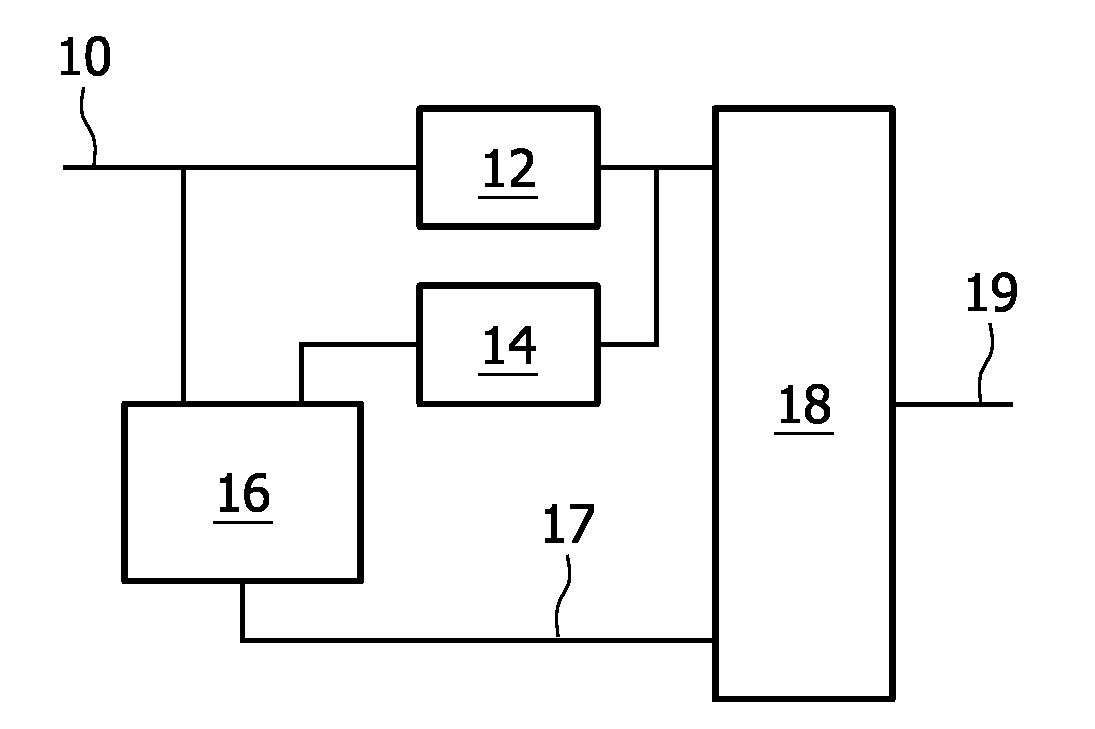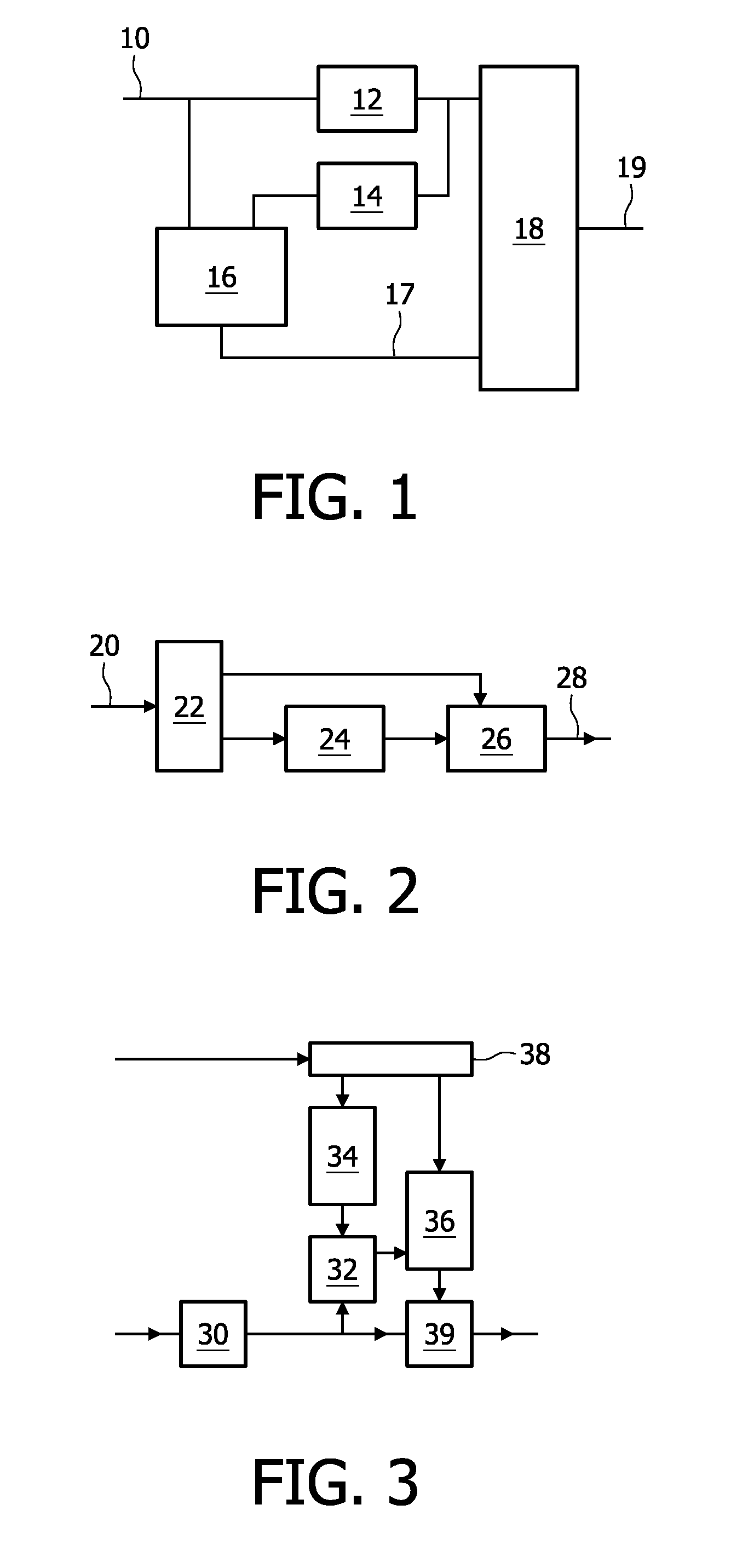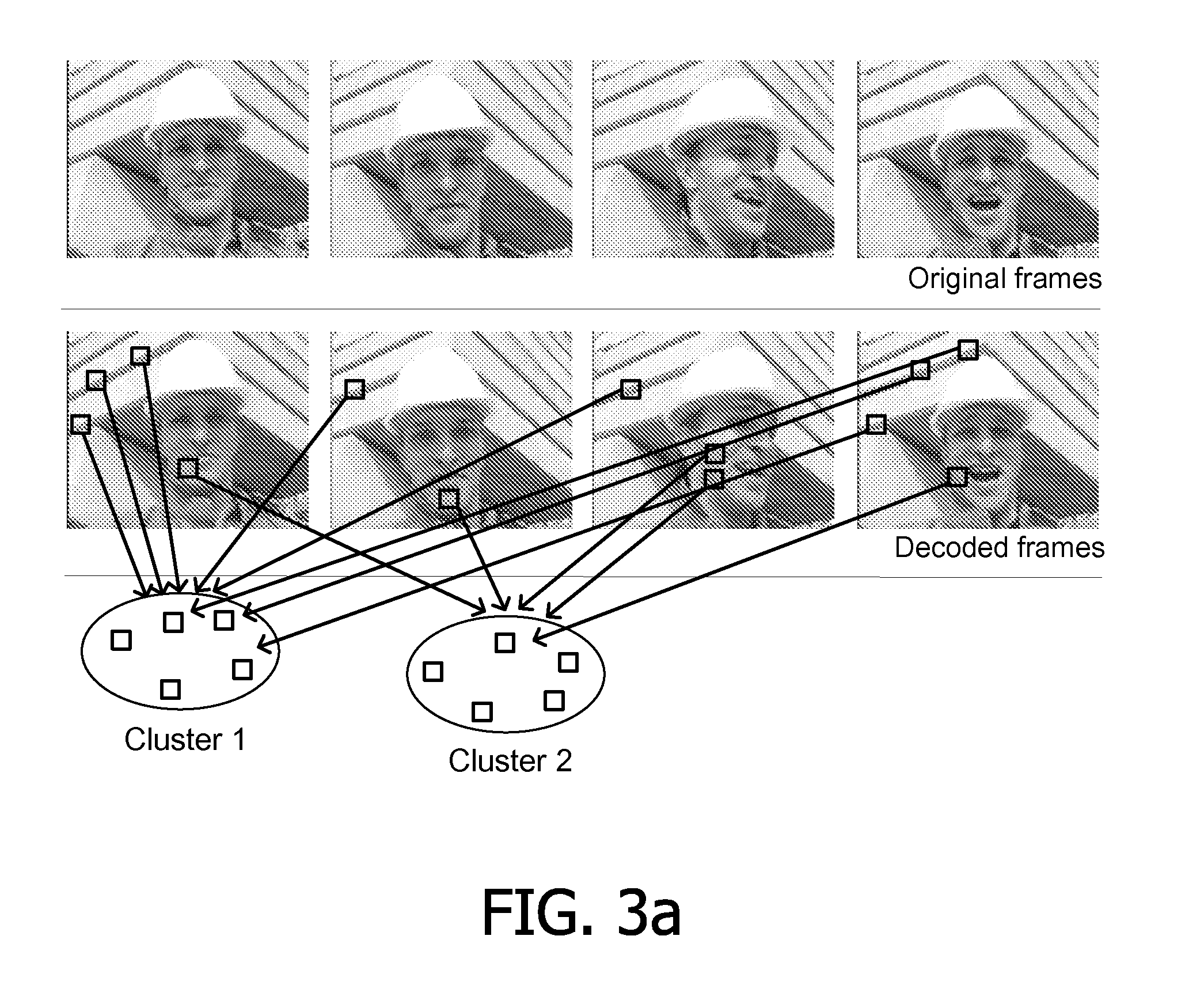Image compression and decompression
a compression and decompression technology, applied in the field of image compression and decompression, can solve the problems of lossy compression methods, and limited reduction of compression artefacts after filtering, so as to reduce bandwidth the effect of needing
- Summary
- Abstract
- Description
- Claims
- Application Information
AI Technical Summary
Benefits of technology
Problems solved by technology
Method used
Image
Examples
example a
[0186] not exact but similar worm-like structures: the transformation of a “not exact rotation” can be done e.g. like this: classify the pixels in a block into dark and bright [e.g. above block average], and use a “chain orientation code” to test similarity: E.g.: If the directional change is in the same compass direction and the, length differs not more than 1 pixel for each oriented run of pixels (e.g. 2 vs. 3 pixel starting segment), the pattern may be considered similarly, and treated with a similar filter (e.g. certain blur Kernel size).
[0187]Example B: One could also normalize the (grey value) height of an edge (although in some filter cases [e.g. filter implements an edge strength change] it may be wiser to adapt the filter also to the height of the edge, but in those cases one could e.g. classify the edge step height in a number of subclasses (strong, medium, minor edge).
[0188]Example C gives another example which can be used e.g. to process (pseudo) periodic textures (e.g. ...
PUM
 Login to View More
Login to View More Abstract
Description
Claims
Application Information
 Login to View More
Login to View More - R&D
- Intellectual Property
- Life Sciences
- Materials
- Tech Scout
- Unparalleled Data Quality
- Higher Quality Content
- 60% Fewer Hallucinations
Browse by: Latest US Patents, China's latest patents, Technical Efficacy Thesaurus, Application Domain, Technology Topic, Popular Technical Reports.
© 2025 PatSnap. All rights reserved.Legal|Privacy policy|Modern Slavery Act Transparency Statement|Sitemap|About US| Contact US: help@patsnap.com



